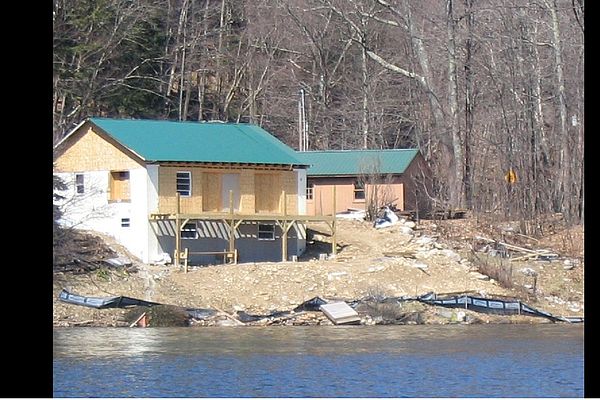The State of Vermont is considering legislation that would increase protection of lake shorelines. The Lake Champlain Committee supports this effort (see recent issue of Lake Look) and has identified it as one of our top priorities for action coming out of the Agency of Natural Resources Act 138 report delivered to the legislature in January. LCC asks all Vermont members to please contact your legislator to express support for greater shoreline protections. There will be a public hearing on Tuesday March 12 from 6:00 - 8:00 PM in Montpelier at the Statehouse in Room 11. Please come out and support our lakes.
Naturally vegetated shorelines protect water quality and ecological health. The roots provide bank stability. During the Lake Champlain floods of 2011, vegetated shorelines resisted erosion better than grassy shores or even areas with retaining walls. The over-hanging branches shade the water. That shade, plus wood that falls into the lake from the shoreline, provides better habitat for fish. Autumn leaves falling from the trees create habitat for insects upon which the fish feed. Vegetated shorelines help treat stormwater pollution. A 100-foot vegetated buffer absorbs 73% of stormwater runoff; a bare grass lawn absorbs only 18%. Cleared shorelines contribute 18 times more sediment, five times more runoff and seven times more phosphorus to the lake than those where the shoreline is wooded. Steven Carpenter, a renowned limnologist, described riparian vegetation as the “number one way to build resilience to climate change for lakes”.
By protecting water quality, naturally vegetated shorelines offer economic benefits both for homeowners and the community. For the landowner, properties on clearer lakes are worth more. One study found for every one meter increase in water quality a property's value increased by $200 per foot of frontage. For the community, clean lakes bring not only added tax revenue from higher property values, but also tourist dollars. A study by the University of Vermont compared the average annual total visitor expenditures for a state park located on a lake or pond to the average for those not so located. The difference was stark; parks on lakes generated nearly three times the revenue of non-lake based state parks.
Voluntary measures to encourage shoreline protection have not been sufficient. Shoreline clearing has increased in pace and extent in recent years. While Vermont allows municipalities to regulate shorelines, only 20% of towns have enacted any sort of shoreline protection measures. The percentage of Vermont shoreline in good condition (17%) is lower than the average for the Northern Appalachian region (42%) or the nation (35%).
It is time for the states and municipalities to enact better regulations to protect shorelines. By protecting the lake we also protect the investments of landowners and the interests of the community. For more information about the issue contact LCC Staff Scientist Mike Winslow at 802-658-1461 or mikew@lakechamplaincommittee.org.
